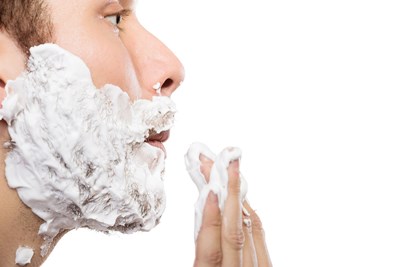Ingrown hairs occur when a shaved or tweezed hair grows back into your skin, resulting in pain, inflammation, and tiny bumps surrounding the area. Ingrown hairs are most common in men who shave their facial hair, but it can occur in anyone who shaves, tweezes, or waxes to remove hair anywhere on the body, especially if the hair is tightly curled.
Ingrown Hair Symptoms
You are most likely to develop ingrown hairs in the beard area, including the chin, cheeks, and neck. They can also appear on the scalps of men who shave their heads. Ingrown hairs are most commonly found on females in the armpits, pubic area, and legs. Signs and symptoms of an ingrown hair include:
- Papules: Small, solid, rounded bumps
- Pustules: Small, pus-filled, blister-like lesions
- Hyperpigmentation: Darkening of the skin
- Pain and itching: Ingrown hairs usually begin with itching but can easily progress to being painful.
- Embedded hairs: When your hairs grow back into the skin, this can sometimes cause an infection to develop.
Ingrown Hair Causes
There are several factors that contribute to the development of an ingrown hair. The structure and direction that your hair grows is thought to play a role, as curved hair follicles tend to make it easier for the hair to re-enter the skin as it begins to grow back. If you shave while the area is dry, this will also increase your risk, since dry shaving creates sharp edges in your hair, especially if it is curly. Pulling your skin taut while you shave allows the cut hair to draw back into the skin and makes it easier for the hair to re-enter the skin before it begins to grow back out. Tweezing often leaves hair fragments under the surface of the skin, which increases your risk for ingrown hairs as well.
Ingrown Hair Diagnosis
If you begin to experience any of the symptoms of an ingrown hair, your doctor will likely be able to diagnose you without performing any tests. He or she will probably look at the area of skin and ask you questions about your hair removal habits in order to reach a correct diagnosis.
Ingrown Hair Treatments
Usually, ingrown hairs will heal on their own without treatment if you stop shaving, tweezing or waxing until your symptoms subside. However, sometimes severe cases of ingrown hairs will require treatment if it recurs or if it becomes infected. Medications that may be prescribed to treat ingrown hairs include:
- Retinoids: Medications that help remove dead skin cells can help to reduce the thickening and darkening of your skin that often occurs where ingrown hairs develop. One commonly prescribed retinoid cream is tretinoin.
- Steroid creams: Your doctor may suggest a cream that will reduce inflammation.
- Antibiotics: If you develop an infection from an ingrown hair, your doctor may prescribe an antibiotic ointment to control the infection. For more severe infections, you may need to take an oral antibiotic instead.
If you want to prevent ingrown hairs from occurring in the future but still want to remove your body hair, try laser treatment instead, as this removes the hair at a deeper level and inhibits re-growth.




